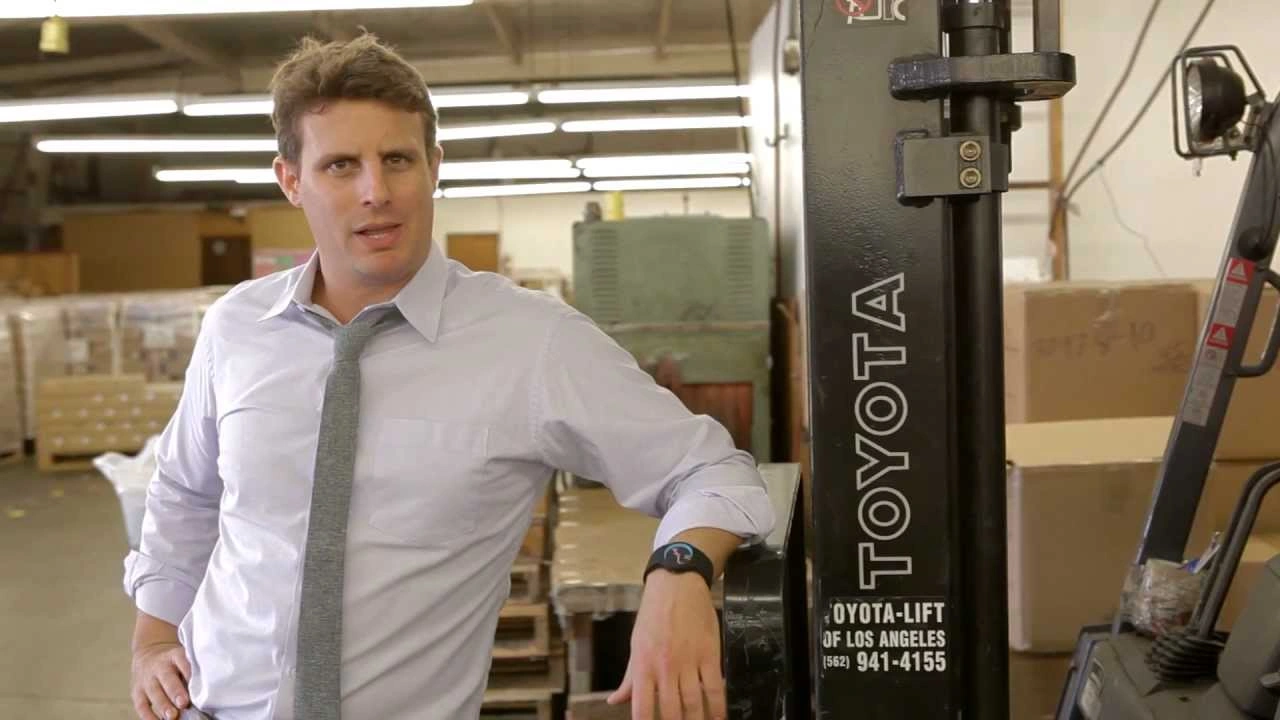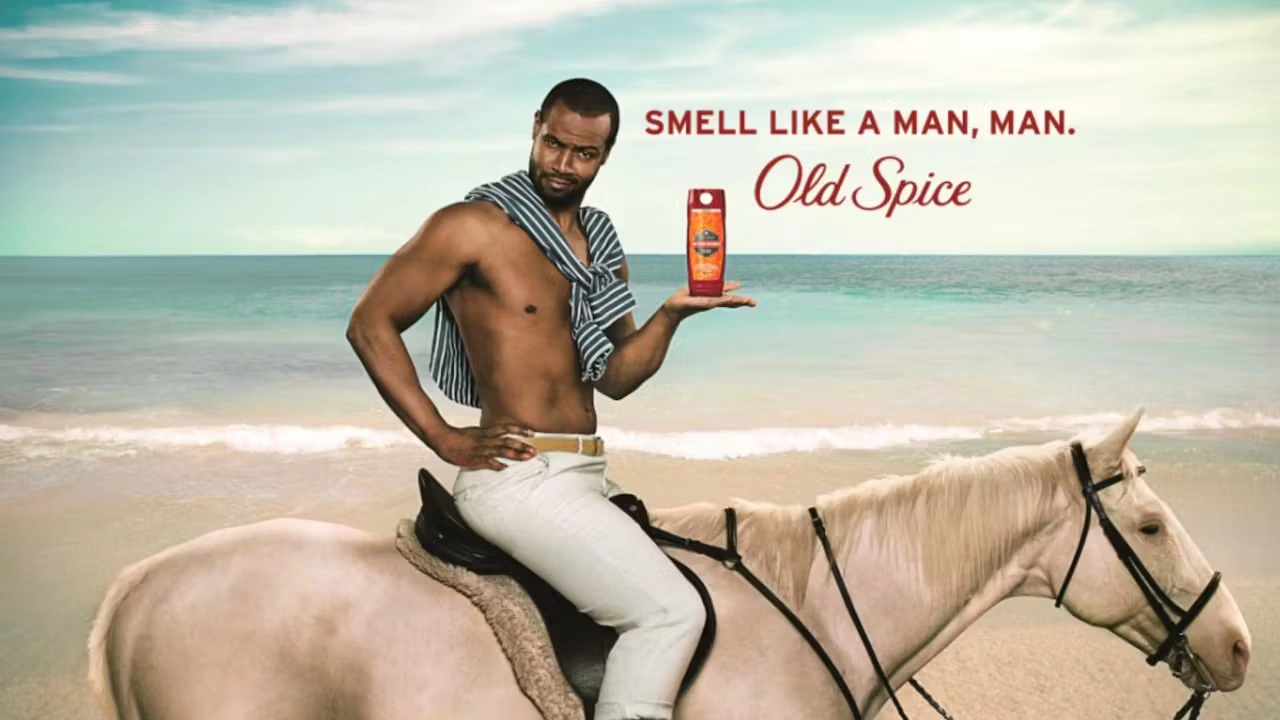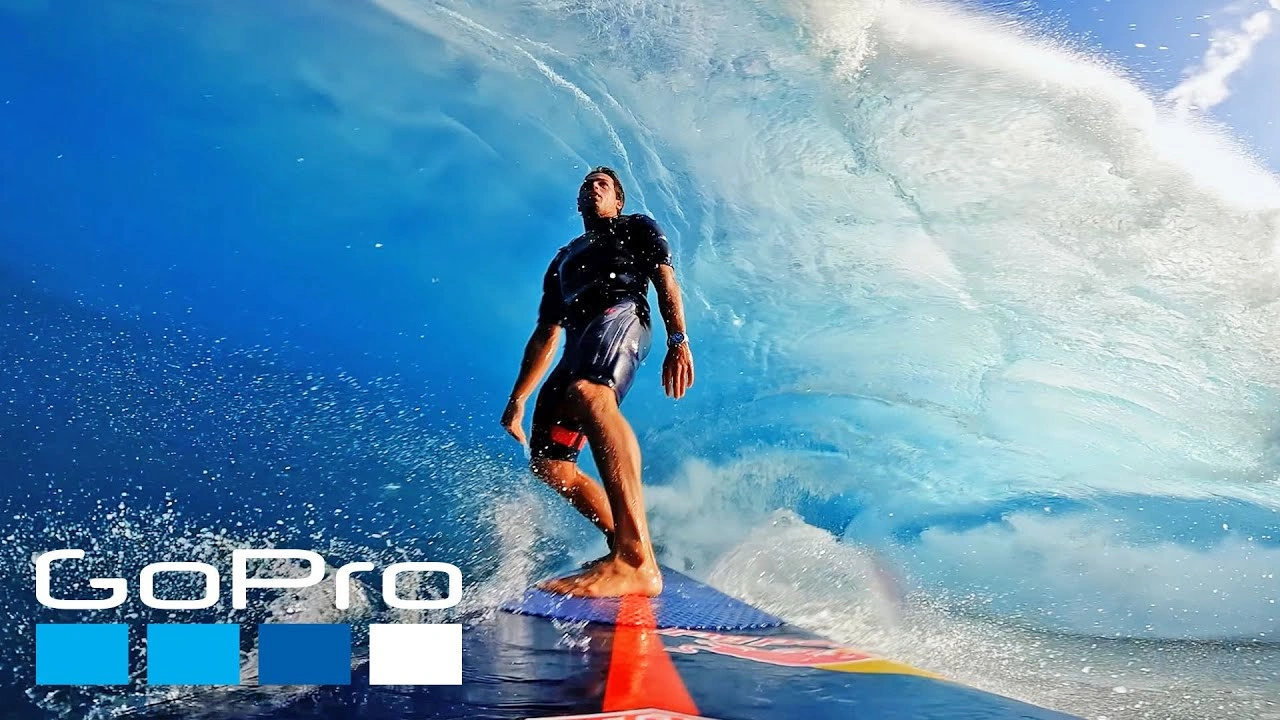7 Content Marketing Examples That Generated 10M+ Views

Getting millions of eyes on your content isn't just luck - it's smart strategy in action. These content marketing examples prove that the right approach can turn a simple idea into a viral sensation that transforms entire businesses.
This breakdown is for marketers, business owners, and content creators who want to see exactly how brands cracked the code on viral marketing campaigns. You'll discover what made these content marketing strategies so effective and how each campaign generated massive engagement while building lasting brand loyalty.
We'll dive deep into how Dollar Shave Club used humour to disrupt a billion-dollar industry with one video, explore Red Bull's approach to creating an entire lifestyle brand around extreme sports content, and examine how Airbnb turned customer stories into its most powerful marketing tool. These successful content marketing case studies show you the blueprint for creating campaigns that don't just go viral - they drive real business results.
Dollar Shave Club's Viral Video Campaign That Disrupted an Industry

Low-budget production that generated massive organic reach
Dollar Shave Club's legendary 2012 video campaign proves you don't need a Hollywood budget to create content marketing magic. Shot for just $4,500 in a single day, this 90-second masterpiece generated over 27 million views and transformed a startup into a billion-dollar brand. The video featured founder Michael Dubin walking through a warehouse, delivering his pitch with razor-sharp wit while showcasing the company's simple subscription model.
The production quality was intentionally raw and authentic, which made it feel genuine rather than polished corporate messaging. This approach resonated with viewers who were tired of overly produced advertisements. The video's organic reach exploded across social media platforms, with users sharing it because it entertained them first and sold to them second. Within 48 hours of launch, the company's website crashed from traffic overload, and they gained 26,000 new subscribers in the first three months.
Humour-driven messaging that made boring products entertaining
Transforming razor blade shopping from mundane to memorable required a complete reimagining of how personal care products could be marketed. Dollar Shave Club's content marketing strategy centred on making people laugh while addressing real frustrations with traditional razor purchasing. Lines like "Are the blades any good? No... our blades are f***ing great" broke through the sanitised language typical of personal care advertising.
The humour wasn't random - it directly addressed customer pain points like overpriced razors, confusing product options, and the hassle of shopping for basic necessities. This approach created an emotional connection that traditional razor companies had never established. The comedy made the video shareable, turning customers into brand ambassadors who spread the message organically across their networks.
Clear value proposition communicated in under 90 seconds
The brilliance of this viral marketing campaign lay in its ability to communicate complex value propositions with crystal clarity. Within the first 15 seconds, viewers understood exactly what Dollar Shave Club offered: quality razors delivered monthly for a few dollars. The video eliminated confusion by presenting three simple subscription tiers with transparent pricing.
Dubin's direct communication style cut through marketing fluff to address the core value: convenience, quality, and affordability. The message was so clear that viewers could explain the business model to others immediately after watching, which amplified word-of-mouth marketing. This clarity became a template for successful content marketing across industries.
Strategic timing during a market disruption opportunity
Dollar Shave Club launched their viral content during a perfect storm of market conditions. Consumers were increasingly frustrated with expensive razor cartridges from established brands, and e-commerce subscription models were gaining mainstream acceptance. The company recognised this disruption opportunity and positioned its content marketing to capitalise on changing consumer behaviours.
The timing coincided with social media platforms reaching critical mass for video content sharing. YouTube's algorithm favoured engaging content, and Facebook was just beginning to prioritise video in newsfeeds. This digital marketing campaign succeeded because it aligned with platform trends and consumer sentiment, creating a viral content marketing phenomenon that established a new category leader.
Red Bull's Extreme Sports Content Strategy Across Multiple Platforms

Consistent brand storytelling through action sports sponsorships
Red Bull transformed itself from just an energy drink company into a media powerhouse by mastering the art of extreme sports storytelling. Their content marketing strategies centre around creating authentic narratives that showcase death-defying stunts and athletic excellence. Rather than simply slapping their logo on events, Red Bull becomes the story itself.
The company sponsors athletes across dozens of extreme sports disciplines - from Felix Baumgartner's stratosphere jump to freestyle motocross competitions. Each sponsorship creates opportunities for compelling visual content that naturally integrates their brand message of pushing limits and achieving the impossible. Their viral marketing campaigns often emerge from these authentic sporting moments, generating millions of organic views because audiences genuinely want to share these incredible feats.
Red Bull's approach goes beyond traditional advertising by creating genuine emotional connections. When viewers watch a wingsuit flyer navigate through mountain peaks or a surfer tackle massive waves, they're not just seeing a product placement - they're experiencing the brand's core values of courage, innovation, and peak performance.
User-generated content amplification from sponsored athletes
The genius of Red Bull's content marketing success stories lies in how they leverage their sponsored athletes as content creators. These partnerships create a continuous stream of authentic material that resonates far more powerfully than traditional advertising.
Sponsored athletes regularly share behind-the-scenes footage, training sessions, and personal stories across their social media channels. Red Bull amplifies this content through their own massive network, creating a multiplier effect that reaches diverse audiences. This approach generates viral content marketing because it feels genuine - these athletes aren't actors reading scripts, they're real people sharing their passions.
The company provides athletes with high-quality production support, ensuring user-generated content maintains professional standards while preserving authenticity. They also encourage athletes to experiment with different content formats:
- Training vlogs showing preparation processes
- Challenge videos featuring other athletes
- Educational content breaking down complex techniques
- Personal storytelling connecting with fans on emotional levels
This strategy creates a win-win scenario where athletes build their personal brands while Red Bull gains access to diverse content streams that feel organic and shareable.
Cross-platform distribution maximising content lifecycle
Red Bull's digital marketing examples showcase masterful content distribution across multiple platforms, ensuring maximum reach and engagement. A single piece of content - like a snowboarding trick video - gets optimised and distributed across YouTube, Instagram, TikTok, Facebook, and their own Red Bull TV platform.
Each platform receives content tailored to its unique audience and format requirements. YouTube gets longer-form documentaries and full event coverage, while TikTok receives quick, punchy clips highlighting the most exciting moments. Instagram Stories feature behind-the-scenes content, and their website hosts comprehensive articles with detailed coverage.
The company also repurposes content across different time periods. A single extreme sports event generates content for months - teaser videos before the event, live coverage during, highlight reels afterwards, and documentary-style retrospectives. This approach maximises the return on their content investment while keeping audiences engaged year-round.
Their brand content marketing success stems from understanding that different audiences consume content differently. By adapting the same core material for various platforms and timeframes, Red Bull ensures their message reaches the widest possible audience while maintaining consistent brand storytelling across all touchpoints.
Airbnb's User-Generated Travel Stories That Built Community Trust

Authentic Customer Testimonials Replacing Traditional Advertising
Airbnb revolutionised the travel industry by letting real customers tell their stories instead of relying on polished marketing campaigns. This content marketing strategy transformed how people viewed home-sharing from a risky proposition into a trusted alternative to traditional hotels.
The platform encouraged guests to share genuine experiences through detailed reviews, photo uploads, and personal travel narratives. These authentic testimonials became powerful content marketing examples that resonated with potential travellers who craved real insights over corporate messaging.
Rather than spending millions on celebrity endorsements or glossy advertisements, Airbnb built a content ecosystem where every stay became potential marketing material. Guests naturally documented their unique experiences, creating a continuous stream of user-generated content that felt organic and trustworthy.
Visual Storytelling Through High-Quality Photography Campaigns
Photography became Airbnb's secret weapon for building an emotional connection with travellers. The company invested heavily in professional photography programs, offering free photoshoots to hosts while encouraging guests to capture and share their own visual stories.
The "Belong Anywhere" campaign showcased stunning visuals of real properties and authentic moments between hosts and guests. These images went far beyond typical hotel stock photos, featuring candid interactions, local cultural experiences, and the genuine warmth of human connection.
Social media platforms amplified this visual storytelling approach, with travellers organically sharing Instagram-worthy moments from their Airbnb stays. Each photo served as a mini-advertisement that felt personal and aspirational rather than promotional.
Local Experience Content That Differentiates From Hotels
Airbnb's content strategy brilliantly highlighted what hotels couldn't offer: authentic local experiences curated by people who actually lived in the destination. The platform became a hub for discovering hidden gems, local traditions, and insider knowledge that transformed ordinary trips into extraordinary adventures.
Host stories became central to this differentiation strategy. Property owners shared their neighbourhood expertise, recommended off-the-beaten-path restaurants, and provided cultural insights that no travel guide could match. This content positioning established Airbnb as more than accommodation – it became a gateway to authentic travel experiences.
The company amplified these stories across multiple channels, creating viral content marketing moments when particularly unique or heartwarming host-guest interactions captured public attention. These narratives consistently emphasised community, belonging, and human connection over transactional relationships.
Social Proof Strategy That Converted Sceptics Into Customers
Early adopters faced significant scepticism about staying in strangers' homes, so Airbnb developed a comprehensive social proof system that addressed safety concerns while building confidence. The review system became bidirectional, allowing both hosts and guests to evaluate each other, creating accountability on both sides.
Success stories from nervous first-time users became powerful conversion tools. These testimonials specifically addressed common fears about safety, cleanliness, and reliability, showing how other sceptics had positive experiences that exceeded their expectations.
The platform strategically highlighted milestone achievements and positive statistics – millions of successful stays, countries served, and community growth numbers. These data points, combined with personal stories, created a compelling case that transformed Airbnb from an experimental concept into a mainstream travel option trusted by millions worldwide.
This successful content marketing approach generated over 150 million organic social media mentions and contributed to Airbnb's valuation reaching $75 billion, proving that authentic storytelling could build entire industries.
HubSpot's Educational Content Hub positioned them as Industry Leaders.

Comprehensive resource library addressing customer pain points
HubSpot transformed its business by creating an extensive library of resources that directly addressed its target audience's biggest challenges. Their content marketing strategy is centred on understanding the specific problems marketing professionals, sales teams, and business owners face daily. Instead of pushing their software, they focused on solving real problems through detailed guides, templates, and actionable content.
The company's resource library became a go-to destination for marketers seeking practical solutions. They created comprehensive guides covering everything from inbound marketing fundamentals to advanced lead nurturing strategies. Each piece of content was designed to provide immediate value, whether someone was a HubSpot customer or not. This approach built massive trust and positioned them as the helpful expert rather than just another vendor.
SEO-optimised blog content driving consistent organic traffic
HubSpot's blog became a powerhouse for organic search traffic by consistently publishing high-quality, keyword-optimised content. They didn't just write about their products – they created content around the topics their ideal customers were actively searching for online. Their editorial calendar focused on trending industry topics, seasonal marketing challenges, and evergreen content that would continue driving traffic long after publication.
The blog's success came from its systematic approach to keyword research and content creation. They identified gaps in existing content and created comprehensive pieces that became the definitive resources on specific topics. Many of their blog posts rank on the first page of Google for competitive marketing terms, driving millions of organic visitors annually. This content marketing strategy generated qualified leads at a fraction of traditional advertising costs.
Free tools and templates for generating qualified leads
One of HubSpot's most brilliant moves was creating free tools and templates that provided immediate value while capturing lead information. Their Marketing Grader tool, website analytics tools, and extensive template library became lead generation machines. People willingly shared their contact information in exchange for these valuable resources.
These free tools served multiple purposes: they demonstrated HubSpot's expertise, provided a taste of their paid software capabilities, and collected valuable lead data. The templates and tools were so useful that they got shared organically across social media and industry forums, amplifying their reach without additional marketing spend.
Thought leadership content establishes market authority
HubSpot's founders and executives became recognisable industry voices through consistent thought leadership content. They published research reports, industry surveys, and trend analyses that media outlets frequently cited. Their annual State of Marketing report became a must-read resource that established them as the authority on marketing trends and benchmarks.
This thought leadership content positioned HubSpot executives as go-to experts for industry commentary. They appeared on podcasts, spoke at conferences, and were quoted in major publications. This visibility translated directly into brand recognition and trust, making their sales process significantly easier.
Community building through educational webinars and courses
HubSpot Academy revolutionised how companies approach customer education by offering free, comprehensive courses on marketing, sales, and customer service. These weren't superficial overviews – they were deep-dive educational programs that rivalled paid university courses. Students could earn certifications that had real value in the job market.
The webinar program complemented their educational offerings with timely, interactive sessions addressing current industry challenges. These sessions regularly attracted thousands of attendees and generated substantial lead databases. The community aspect was crucial – attendees connected with each other, shared experiences, and became advocates for HubSpot's approach to business growth.
Their educational content marketing strategy created a self-reinforcing cycle: valuable free education attracted prospects, educated users became customers, and satisfied customers became advocates who recommended the content to others. This approach generated over 100 million views across their educational content and established HubSpot as the undisputed leader in inbound marketing methodology.
Old Spice's Social Media Transformation Campaign

Real-time personalised video responses to customer comments
Old Spice pulled off one of the most impressive viral marketing campaigns in history by creating personalised video responses to individual customer comments across social media platforms. In 2010, the brand launched "The Man Your Man Could Smell Like" campaign, featuring the charismatic Isaiah Mustafa responding to fan questions and comments in real-time video format.
The campaign's genius lay in its personalised approach. Old Spice created over 180 custom videos in just three days, directly addressing fans by name and responding to their specific questions or comments. These weren't generic responses – each video was carefully crafted to feel like a personal conversation between the Old Spice spokesperson and individual customers.
The results were staggering. The original commercial garnered over 54 million views, while the follow-up personalised response videos collectively reached millions more. This content marketing strategy created an unprecedented level of engagement, with fans actively trying to get the brand's attention just to receive their own personalised video response.
Character-driven content that revitalised an ageing brand image
Old Spice transformed from a dated men's grooming brand associated with older generations into a modern, edgy company that younger consumers actually wanted to engage with. The campaign centred around creating memorable characters who embodied confidence, humour, and absurdity in equal measure.
Isaiah Mustafa's character became the face of this transformation, delivering rapid-fire monologues filled with non-sequiturs and surreal imagery. The brand doubled down on this approach by introducing Terry Crews as another spokesperson, bringing his own unique energy and style to the content marketing campaigns that went viral.
This character-driven approach worked because it gave Old Spice a distinctive voice in a crowded marketplace. Instead of focusing solely on product features or benefits, the brand created entertainment value that people actually wanted to share. The characters became so popular that they transcended traditional advertising, appearing in memes, social media conversations, and popular culture references.
The brand's sales reflected this successful image makeover, with Old Spice becoming the top-selling men's body wash brand in the United States shortly after the campaign launch.
Multi-channel activation across traditional and digital media
Old Spice didn't limit its successful content marketing to just one platform or medium. The campaign strategically deployed across television, YouTube, Twitter, Facebook, and other social media channels, creating a cohesive brand experience regardless of where customers encountered the content.
Television commercials served as the primary awareness driver, introducing the characters and establishing the brand's new personality. These spots were designed specifically to encourage online engagement, often ending with calls-to-action directing viewers to social media platforms.
YouTube became the hub for personalised response videos, while Twitter and Facebook facilitated direct conversation between the brand and customers. The seamless integration across channels meant that conversations could start on TV, continue on Twitter, and culminate in personalised YouTube videos.
This multi-channel approach amplified the campaign's reach exponentially. Each platform served a specific purpose while contributing to the overall narrative, creating multiple touchpoints for customer engagement and ensuring maximum exposure for the viral content marketing strategy.
Coca-Cola's Share a Coke Personalisation Campaign

Mass customisation strategy that encouraged social sharing
Coca-Cola turned the simple act of drinking a soda into a personal experience by replacing its iconic logo with popular names and phrases. The "Share a Coke" campaign launched in Australia in 2011 and quickly became one of the most successful content marketing examples in history. The company printed over 250 of the most popular names among teens and young adults on their bottles and cans, creating instant personal connections with consumers.
The genius behind this content marketing strategy lay in its ability to transform every Coca-Cola product into shareable content. People actively searched store shelves for bottles with their names or their friends' names, creating natural photo opportunities and social media moments. This wasn't just advertising - it was experiential marketing that turned consumers into brand ambassadors without them even realising it.
The campaign generated massive social media buzz as people shared photos of their personalised bottles across platforms. The hashtag # ShareACoke became a viral phenomenon, with millions of posts featuring customised products. This user-generated content provided Coca-Cola with authentic marketing materials while building genuine emotional connections with its audience.
Emotional connection through personal name recognition
Names carry powerful psychological weight, and Coca-Cola tapped into this fundamental human response. When someone spotted their name on a Coca-Cola bottle, it created an instant emotional connection that traditional advertising couldn't achieve. The personalisation made the brand feel approachable and friendly rather than corporate and distant.
The campaign sparked conversations and created shared experiences. Friends would surprise each other with bottles bearing their names, and families would collect different name variations. This emotional engagement transformed a simple beverage purchase into a meaningful gesture, strengthening brand loyalty in ways that traditional marketing campaigns struggle to accomplish.
Research shows that hearing or seeing our own names triggers a neurological response called the "cocktail party effect," where our brains become more attentive and engaged. Coca-Cola leveraged this psychological principle to create deeper brand connections, making their content marketing strategy both scientifically sound and emotionally resonant.
User-generated content is exploding across social platforms
The Share a Coke campaign created a content marketing goldmine by inspiring millions of organic posts across social media platforms. Consumers didn't need prompting - they naturally wanted to share their discoveries and experiences. This organic content generation provided Coca-Cola with authentic marketing materials that money couldn't buy.
Social media platforms saw an explosion of creativity as people found innovative ways to showcase their personalised bottles. From elaborate photoshoots to simple selfies, the content variety was endless. Users created stories around their bottles, shared memories associated with the names they found, and tagged friends whose names they discovered.
The campaign's success on social platforms demonstrated the power of user-generated content in modern marketing. Unlike traditional advertising that interrupts consumers, this approach invited participation and creativity. The authentic nature of user-generated content also carried more credibility than branded messages, making it one of the most effective viral marketing campaigns of the digital age.
Global campaign adaptation for local market relevance
Coca-Cola's brilliance extended to its global rollout strategy, adapting the campaign for local markets while maintaining the core concept. In each country, they researched the most popular names and cultural preferences, ensuring local relevance. This localisation approach made the campaign feel native to each market rather than like a foreign import.
Different regions received customised name lists that reflected their unique demographics and cultural preferences. In some markets, they included nicknames and terms of endearment, while others featured surnames or family names. This attention to local nuances showed respect for cultural differences and increased campaign effectiveness.
The global adaptation strategy proved that successful content marketing campaigns can maintain universal appeal while respecting local differences. By 2014, the campaign had launched in over 80 countries, each with its own culturally relevant approach. This flexibility allowed Coca-Cola to create a truly global phenomenon that felt personally relevant to consumers worldwide, solidifying its place among the most successful content marketing case studies in history.
GoPro's Customer-Centric Content Creation Model

Adventure storytelling using actual product footage
GoPro transformed content marketing by turning its customers into storytellers. Instead of creating polished studio advertisements, they built their entire brand around raw, authentic footage captured by real users in extreme situations. This approach generated billions of views because people connected with genuine experiences rather than manufactured marketing messages.
The company's YouTube channel showcases breathtaking moments: surfers riding massive waves, skydivers jumping from planes, and mountain climbers scaling impossible peaks. Each video demonstrates the camera's durability and quality while telling compelling human stories. This dual purpose made every piece of content both entertaining and educational, showing potential customers exactly what the product could capture in their own adventures.
GoPro's "Be a HERO" campaign exemplifies this strategy perfectly. The campaign featured user-submitted videos that highlighted incredible moments of human achievement and natural beauty. These weren't professional productions with expensive crews – they were authentic experiences that resonated with viewers on an emotional level.
Community-driven content creation reduces production costs
Smart brands recognise that their customers often create better content than expensive agencies. GoPro mastered this concept by building a massive community of content creators who voluntarily produced marketing materials. This approach slashed production costs while generating more authentic, diverse content than any single creative team could produce.
The company established clear submission guidelines and reward systems that encouraged users to share their best footage. Winners received recognition, prizes, and sometimes even cash payments, but the real motivation came from the prestige of being featured on GoPro's official channels. This created a self-sustaining ecosystem where customers actively promoted the brand because they wanted their content showcased.
User-generated content also solved the scale problem that many brands face. While traditional marketing teams might produce dozens of videos per year, GoPro's community generates thousands of pieces of content monthly. This volume gives them constant fresh material to share across multiple platforms while maintaining authentic brand messaging.
Influencer partnerships with extreme sports athletes
Long before influencer marketing became mainstream, GoPro recognised the power of partnering with extreme sports athletes who naturally aligned with their brand values. These partnerships felt organic because the athletes genuinely used and needed the product for their activities, making endorsements credible and effective.
Professional athletes like Felix Baumgartner (the Red Bull Stratos jump) and Kelly Slater (surfing) created iconic content that showcased GoPro cameras in the most demanding conditions possible. These partnerships generated massive media coverage beyond just social media, with mainstream news outlets covering the spectacular footage captured on GoPro devices.
The company also worked with emerging athletes and adventure enthusiasts, not just established stars. This strategy helped them tap into niche communities while supporting up-and-coming talent who often had highly engaged, passionate followers. These micro-influencers frequently produced more authentic content than mega-celebrities because their audiences trusted their genuine recommendations.
Product demonstration through real-world usage scenarios
Traditional product demonstrations show features in controlled environments, but GoPro reversed this approach by demonstrating its cameras in the most challenging real-world scenarios imaginable. This strategy proved the product's capabilities more convincingly than any studio setup could achieve.
Videos of GoPro cameras surviving shark attacks, volcanic eruptions, and high-speed crashes became viral sensations while simultaneously serving as powerful product demonstrations. Viewers could see exactly how the camera performed under extreme stress, building confidence in the product's durability and quality.
The company also created content showing everyday usage scenarios – family vacations, local hiking trails, and backyard adventures. This broader approach helped expand their market beyond extreme athletes to casual users who wanted to capture their own special moments with professional-quality footage.
Conclusion
These seven campaigns prove that viral content isn't just about luck – it's about understanding your audience and delivering value in unexpected ways. From Dollar Shave Club's hilarious disruption of a boring industry to GoPro's brilliant strategy of letting customers become content creators, each brand found a unique way to connect with millions of people. The common thread? They all prioritised authentic storytelling over traditional advertising, whether through education, entertainment, or genuine human connection.
The best part is that you don't need a massive budget to create content that resonates. HubSpot built its empire on helpful educational content, while Airbnb turned everyday travel stories into marketing gold. These brands show us that when you focus on solving problems, entertaining people, or making them feel part of something bigger, the views will follow naturally. Start by identifying what your audience truly cares about, then find creative ways to deliver that value consistently across your channels.
References:
https://www.audiology.org/the-cocktail-party-effect/
https://www.cocacolaep.com/news-and-stories/get-to-know-coca-colas-iconic-share-a-coke-campaign/
https://gopro.com/en/us/awards/be-a-hero-challenge
https://www.hubspot.com/state-of-marketing
https://www.redbull.com/int-en/projects/red-bull-stratos
https://www.youtube.com/watch?v=owGykVbfgUE
.avif)

.webp)


.webp)



